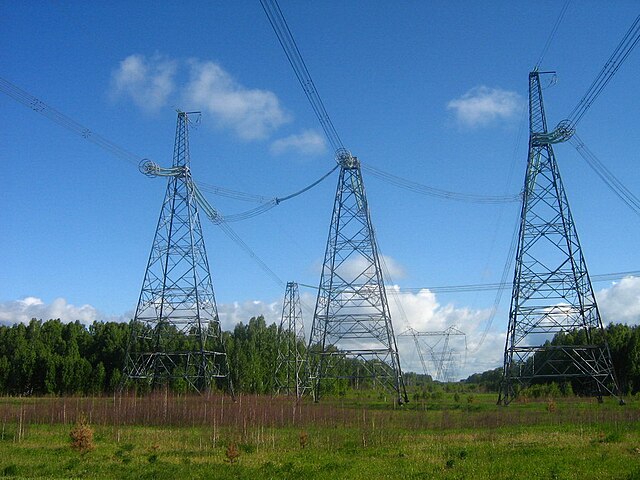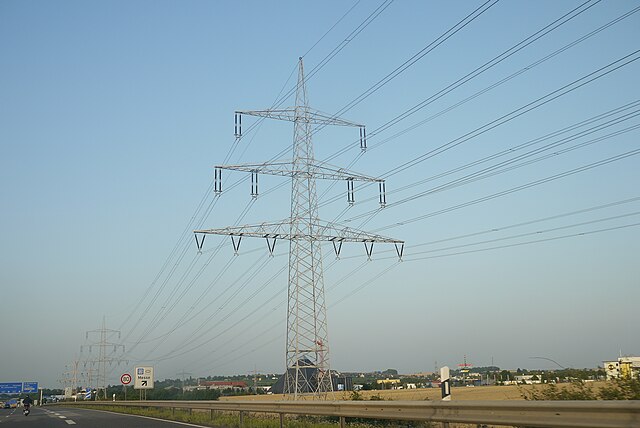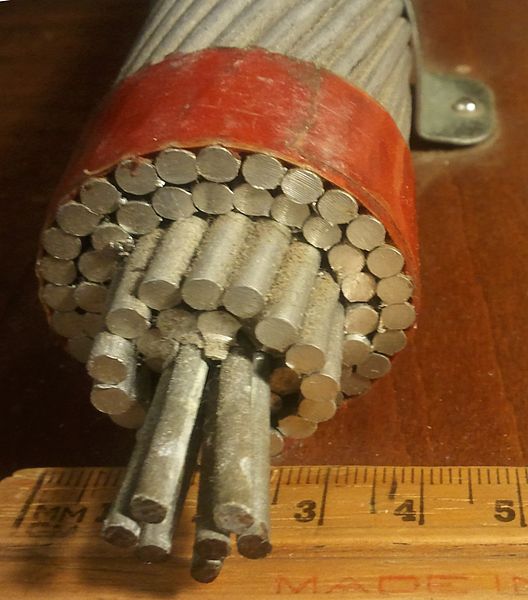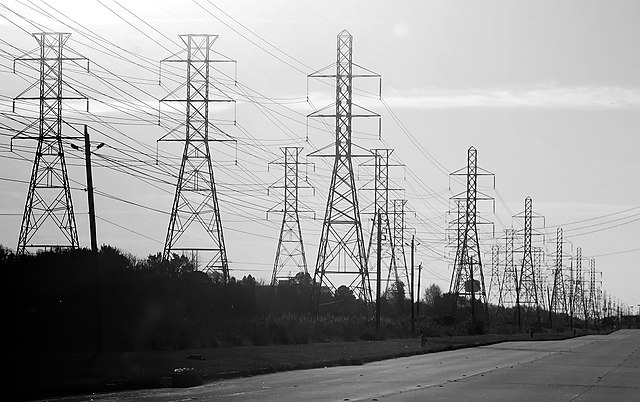Ekibastuz–Kokshetau high-voltage line
The Ekibastuz–Kokshetau high-voltage line is an alternating current electrical power transmission line in Kazakhstan from Ekibastuz to Kokshetau. It was the first commercially used power line in the world which operated at 1,150 kV, the highest transmission line voltage in the world. It is a part of the Itatsk (Sharypovo)–Barnaul–Ekibastuz–Kokshetau–Kostanay–Chelyabinsk (Siberia–Kazakhstan–Urals) transmission system, which was designed to transfer electricity from Siberia and Kazakhstan to industrial regions in the Urals.
Ekibastuz–Kokshetau high-voltage line
PSK-300A and PS-400A (U400A) disc suspension insulators used on 1150 kV powerlines in comparison with common U70BL insulator
Electric power transmission
Electric power transmission is the bulk movement of electrical energy from a generating site, such as a power plant, to an electrical substation. The interconnected lines that facilitate this movement form a transmission network. This is distinct from the local wiring between high-voltage substations and customers, which is typically referred to as electric power distribution. The combined transmission and distribution network is part of electricity delivery, known as the electrical grid.
A four-circuit, two-voltage power transmission line; Bundled 2-ways
A typical ACSR. The conductor consists of seven strands of steel surrounded by four layers of aluminium.
Three abreast electrical pylons in Webster, Texas
New York City streets in 1890. Besides telegraph lines, multiple electric lines were required for each class of device requiring different voltages.






